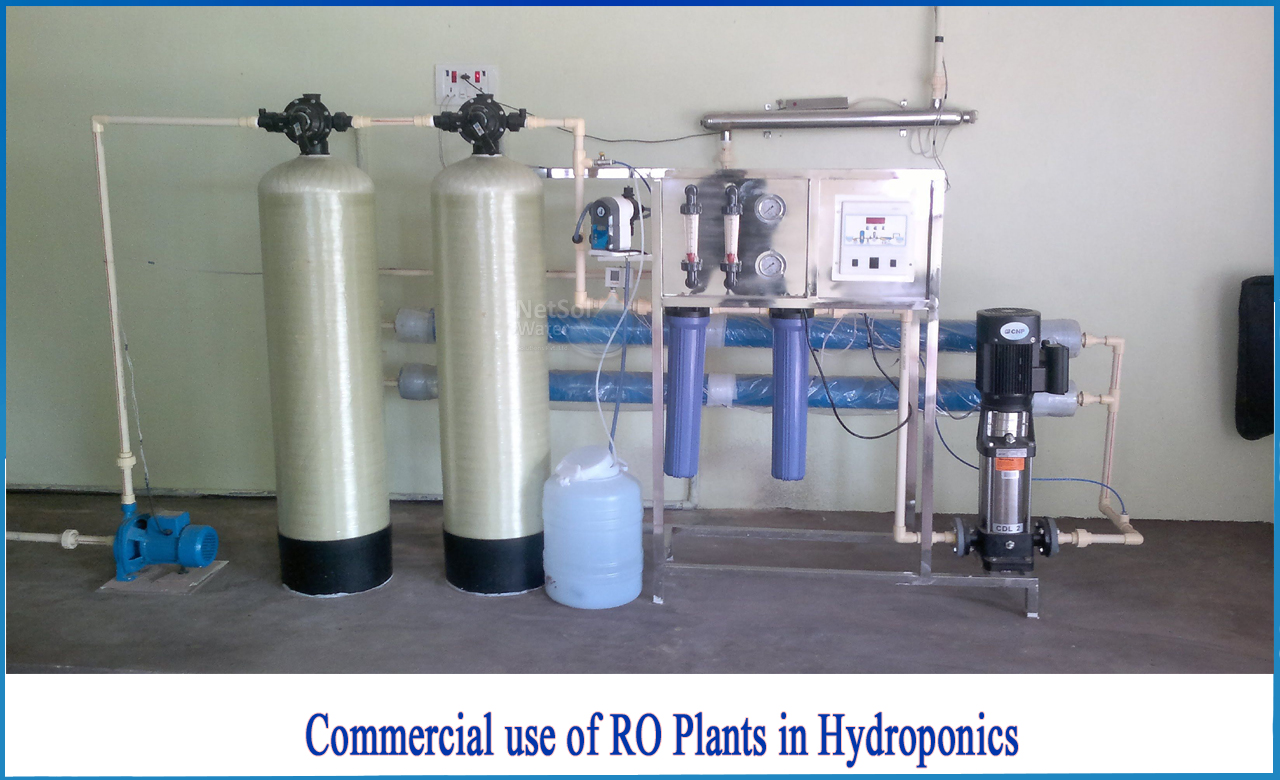What is Commercial use of RO plants in Hydroponics?
The water used to generate and maintain nutrient solutions is one of the most essential factors in commercial hydroponic cultivation. When you look at the mixing standards for professional nutrient manufacturers, you'll note that they always call for utilizing 0 ppm (parts per million) water as a starting point for the nutrient solution formulation.
Ensuring the right quantity of minerals and compounds
It's considerably more difficult to tweak your formula and ensure you have the right quantities of each component for optimal development if you don't have pure water. It's possible that the water source you're using is really harmful to plant development. One well-known example is chlorine.
1: Chlorine in high amountsmay be hazardous to plants. To remove biological pollutants, water treatment plants may shock the water supply with high quantities of chlorine.
2: Another chlorine-based disinfectant that can affect plants and other hydroculture activities is chloramine. Chloramines in drinking water are okay for plants, but they can damage fish and compost teas.
3: An overabundance of calcium and magnesium dissolved in the water causes hard water. Calcium and magnesium, are both minerals contained in most complete plant fertilizer formulas by coincidence. The issue is that the high concentrations produce mineral salt build-up on the roots and in the growth medium, resulting in nutrient lockout. At the absolute least, the plants will be unable to absorb the right mix of nutrients needed for long-term development. In the worst-case scenario, the key nutrients essential for growth will be missing, resulting in the crop's death.
4: To reduce the pH of some carbonate-rich water sources, acids must be added. Nutrients are rendered inaccessible for uptake by plants if the pH is out of range. The bicarbonates are neutralized to carbon dioxide and water when phosphoric acid is introduced to reduce the pH. Some of the acids react with calcium to generate calcium phosphate, that is insoluble.
The plants do not have access to calcium or phosphate.If the water source is strong in bicarbonates, lowering the pH of the nutrition solution may need ten to fifteen times the amount of phosphoric acid. The risk of phosphorus poisoning rises as a result of all this.
5: Sodium can produce nutritional insufficiency symptoms by interfering with trace element intake. Copper, boron, zinc, and iron are examples of trace elements that can accumulate to dangerous quantities.
Commercial use of RO in Hydroponics
The reverse osmosis (RO) filtration system is the finest available technology for removing disinfection chemicals and extra minerals from your water supply. By using a hydroponics water filtration system, Netsol’s commercial hydroponic reverse osmosis systems are intended to give the finest water for hydroponic growing operations.
Some water sources come from a variety of places, each having a particular chemical make-up. You never know what your water quality will be like from one day to the next. In certain inland water sources, sodium levels of above 2,000 ppm have been discovered.
Micron sediment pre-filter, chloramine, activated carbon cartridges for chlorine, and organic pollutants removal, and reverse osmosis filtration that eliminates all minerals, salts, and heavy metals are all included in Netsol reverse osmosis systems.
Technical assistance and guidance
Netsol water collaborates with a wide range of international organizations to tackle complicated RO problems by strategically integrating modern treatment technology with practical solutions.
If you need technical help and guidance, or simply have a query regarding our water and wastewater treatment technology solutions, contact one of our expert advisers via phone at +919650608473 or contact via email at enquiry@netsolwater.com



